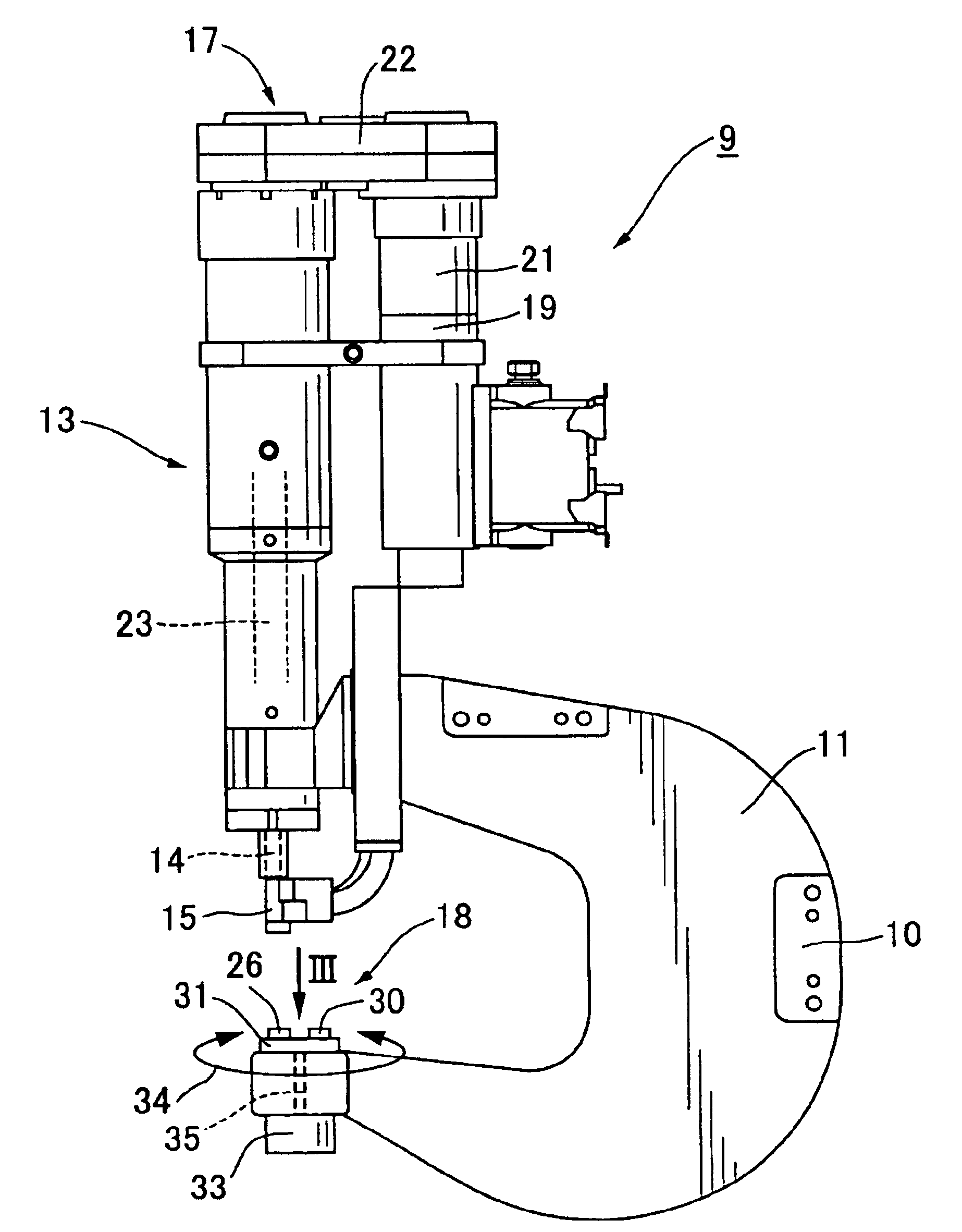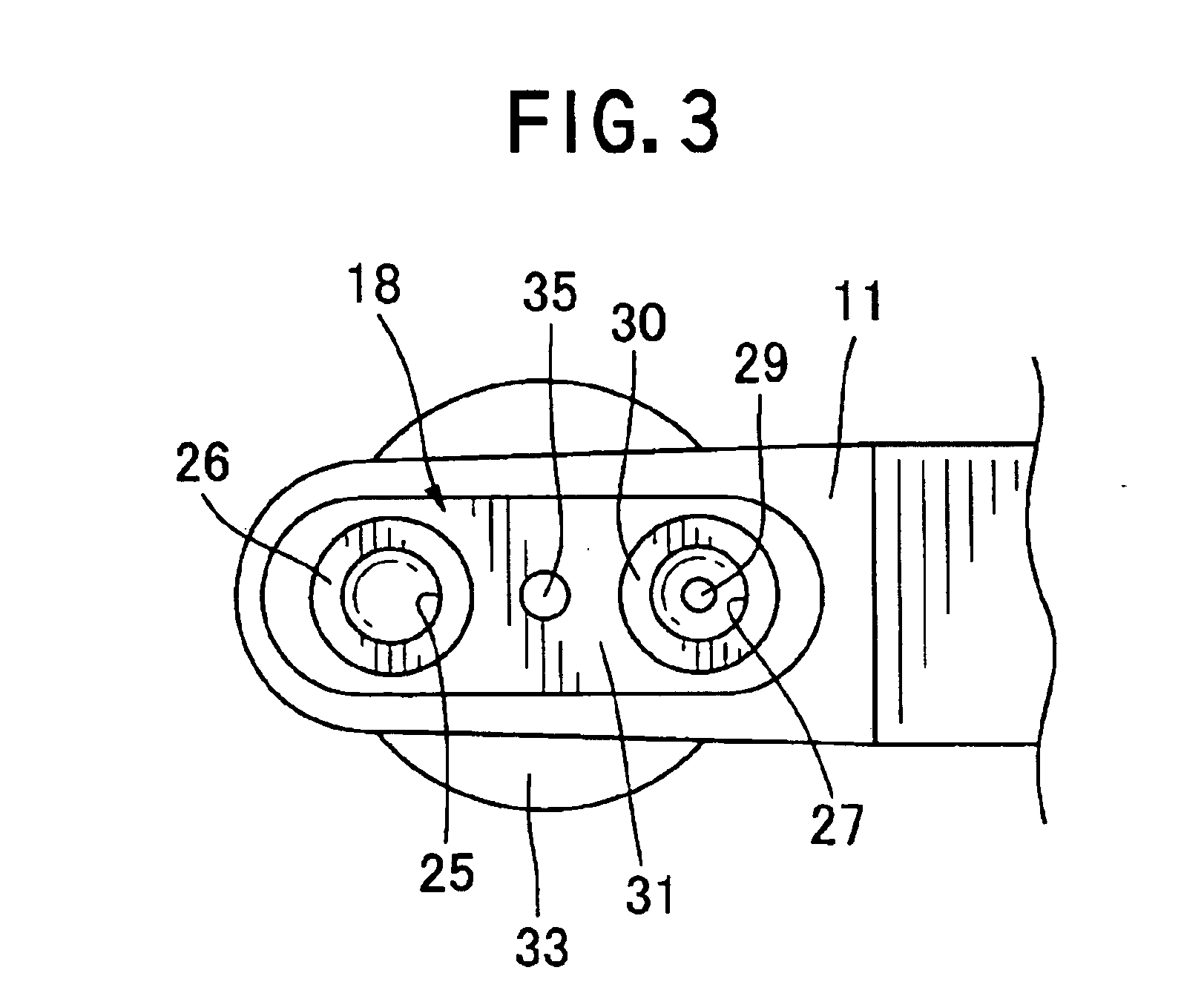Self-piercing rivet setting apparatus and system
a rivet setting and self-piercing technology, applied in metal working equipment, metal-working equipment, manufacturing tools, etc., can solve the problems of insufficient connection strength, restricted rivet-driving direction, and rivet oblique piercing of the receiving-side workpiece, so as to reduce or eliminate the restriction on the rivet-driving direction and the effect of sufficient undercut amoun
- Summary
- Abstract
- Description
- Claims
- Application Information
AI Technical Summary
Benefits of technology
Problems solved by technology
Method used
Image
Examples
Embodiment Construction
[0017]With reference to the drawings, an embodiment of the present invention will now be described. FIG. 2 schematically shows the entire structure of a self-piercing rivet setting apparatus 9 according one embodiment of the present invention. In FIG. 2, the self-piercing rivet setting apparatus 9 includes a C-shaped frame 11 having a coupling portion 10 to be coupled with an articulated robot arm (not shown). The C-shaped frame 3 is an integral rigid body including an upper horizontal arm, a vertical arm having the coupling portion 10 attached thereto, and a lower horizontal arm. A rivet setting assembly 13 of the self-piercing rivet setting apparatus is attached to or one of the ends or the end of the upper horizontal arm of the C-shaped frame 11. The setting assembly 13 is provided with a punch 14 movably attached to the front-end (the lower end in FIG. 2) thereof. A receiver unit 15 extends from the punch 14 to the front-end side. A self-piercing rivet (see the self-piercing riv...
PUM
| Property | Measurement | Unit |
|---|---|---|
| diameter | aaaaa | aaaaa |
| piercing depth | aaaaa | aaaaa |
| weight | aaaaa | aaaaa |
Abstract
Description
Claims
Application Information
 Login to View More
Login to View More - R&D
- Intellectual Property
- Life Sciences
- Materials
- Tech Scout
- Unparalleled Data Quality
- Higher Quality Content
- 60% Fewer Hallucinations
Browse by: Latest US Patents, China's latest patents, Technical Efficacy Thesaurus, Application Domain, Technology Topic, Popular Technical Reports.
© 2025 PatSnap. All rights reserved.Legal|Privacy policy|Modern Slavery Act Transparency Statement|Sitemap|About US| Contact US: help@patsnap.com



